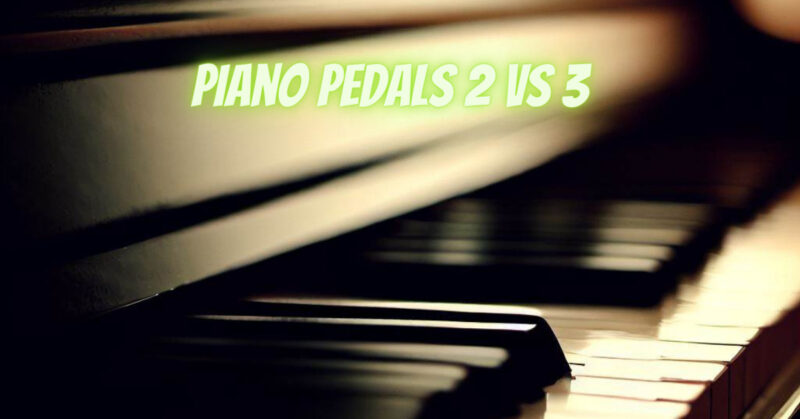Pianos are renowned for their expressive capabilities, and the pedals play a significant role in shaping the sound and dynamics of the instrument. When it comes to piano pedals, there are typically two options: pianos with two pedals and pianos with three pedals. In this article, we will explore the differences between two-pedal and three-pedal pianos, discussing their functions and how they enhance the playing experience.
Two-Pedal Pianos:
- Damper Pedal (Right Pedal): The damper pedal, also known as the sustain pedal, is the most common pedal found on all pianos, including two-pedal models. When the damper pedal is pressed, it lifts all the dampers from the strings, allowing them to vibrate freely and sustain their sound. Releasing the pedal causes the dampers to return to their original position, stopping the strings’ vibration.
- Soft Pedal (Left Pedal): The left pedal on a two-pedal piano is the soft pedal, also known as the una corda pedal. When the soft pedal is engaged, it shifts the entire action mechanism slightly to the right, causing the hammers to strike only two out of the three strings in a piano’s trichord. This creates a softer and more muffled sound, suitable for delicate and expressive playing.
Three-Pedal Pianos:
- Damper Pedal (Right Pedal): The damper pedal on a three-pedal piano functions the same way as in a two-pedal piano, lifting all the dampers from the strings for sustained sound when pressed. Releasing the pedal causes the dampers to return to their original position.
- Soft Pedal (Left Pedal): Similar to the two-pedal piano, the left pedal on a three-pedal piano is the soft pedal. It shifts the action mechanism to the right, resulting in a softer and muffled sound.
- Sostenuto Pedal (Middle Pedal): The middle pedal, found only in three-pedal pianos, is the sostenuto pedal. When the sostenuto pedal is pressed, it sustains only the notes that are being held down at the moment the pedal is engaged. Notes played after the pedal is pressed will not be sustained. This pedal allows for selective sustaining, enabling the pianist to sustain specific chords or notes while keeping others unaffected.
Advantages of Three-Pedal Pianos: Having a third pedal, the sostenuto pedal, provides additional expressive capabilities and control for the pianist. It allows for selective and independent sustaining, making it particularly useful in complex musical passages where specific notes or chords need to be sustained while others are released.
Advantages of Two-Pedal Pianos: Two-pedal pianos are more common and widely available, making them suitable for most pianists and musical situations. They provide the essential functions of sustaining the sound with the damper pedal and softening the volume with the soft pedal.
| Feature | Two-pedal piano | Three-pedal piano |
|---|---|---|
| Number of pedals | 2 | 3 |
| Sustain pedal | Yes | Yes |
| Soft pedal | Yes | Yes |
| Sostenuto pedal | No | Yes |
| Cost | Less expensive | More expensive |
| Portability | More portable | Less portable |
| Versatility | Less versatile | More versatile |
Conclusion:
Both two-pedal and three-pedal pianos have their advantages and serve different purposes. Two-pedal pianos are suitable for most pianists and offer the fundamental functions of sustaining and softening the sound. Three-pedal pianos provide an additional level of expressiveness with the sostenuto pedal, allowing for selective and independent sustaining. The choice between a two-pedal or three-pedal piano ultimately depends on the pianist’s needs, playing style, and musical repertoire. It is recommended to try out different piano models with varying pedal configurations to determine which suits your playing preferences and artistic requirements best.

